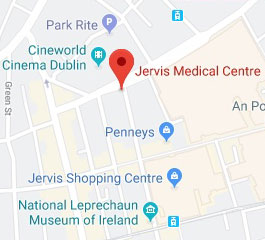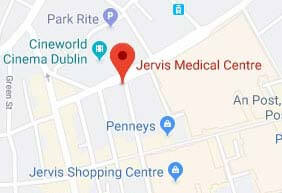Breast Pain (Mastalgia) & Awareness
Breast Pain – Mastalgia
It can vary from mild premenstrual discomfort to a more severe pain, which persists through out the cycle or from the time of ovulation. In most cases the breasts are more sensitive prior to menstruation and less sensitive as the period starts.
Breast pain may be present in one or both breasts. It may be localised (isolated to one particular spot) or diffuse (encompass most of the breast). It can radiate into the armpit, even down as far as the elbow. Some people describe it as a ‘heaviness, soreness or ache’.
Peak incidence of Mastalgia occurs in the 35-45 year age group. It becomes rare after the menopause however the use of HRT may account for women who complain of it in this age group.
Cyclical breast pain does not have any relationship to breast cancer. Women with cyclical breast tenderness may have breasts that react abnormally to normal levels of hormones in the pre menstrual phases of their menstrual cycle.
There is evidence to suggest that some women have reduced levels of certain essential fatty acids. An essential fatty acid is a nutrient that the body can’t make but it is essential for good health.

Treatment Options
Dietary
- Decrease weight
- Reduce the intake of caffeine
- Eat a low fat diet
Bra Fitting
Be sure to wear a well-fitting support bra, which has been measured correctly. Bra size will change with weight fluctuation. When breast tenderness is at it peak wearing a bra at night has proven helpful for some people.
Evening Primrose Oil
Evening Primrose Oil is a perennial herb that takes its name from its habit of opening its flower between the hours of 6 and 7 o’clockin the evening.
It is a rich source of gamolenic acid an essential fatty acid necessary for the breast. If taken on a regular basis it can relieve cyclical breast pain in ladies.
Evening Primrose Oil is sold in supermarkets, health food stores and pharmacies. It comes in different strength capsules 500mg , 1000mg and 1500mg. A dose will be recommended by your doctor usually of 1000mg to 1500mgs. It is taken every day initially. Once the discomfort eases the dose can be reduced gradually. It usually takes 8-12 weeks to see an improvement. Evening primrose oil is not recommended during pregnancy or pregnancy planning.
- Geranium oil (5 drops in a warm bath) is sometimes soothing.
Be Breast Aware
One of the most important things that you can do for your health is to get to know your breasts. Breast cancer is the most common female cancer so it is important to look after your breasts by being breast aware.
Being breast aware means getting to know how your breasts look and feel so you know what is normal for you. You can then feel more confident about noticing any unusual changes.
Women themselves find most lumps. Remember that most breast lumps are not due to cancer but you don’t know if you don’t ask. Even though it is uncommon, men can also get breast cancer so they need to be breast aware too. Early detection provides the best possible chance of surviving the disease.
How can I be breast aware?
Breast awareness means becoming familiar with your breasts, how they look and feel at different times of the month. Try to get used to looking at and feeling your breasts regularly. By doing this you will be more able to notice any changes that aren’t usual for you. Use times like having a bath or shower to notice how your breasts look and feel. Running a soapy hand over your breasts and armpit helps you to feel the texture of your breast more easily.
You may notice that your breasts change in size, shape or in how they feel at different times of the month. Your breasts may become lumpier or more tender around the time of your menstrual period, for example. As you become familiar with your breasts you’ll become more confident in knowing what is normal for you.
What are the changes to look for?
- Any lumps, thickening or bumpy areas in the breast or armpit that seem different from other breast tissue. This is very important if it is new.
- Any changes in the size or shape of the breast (it may be normal for you to have one breast larger than the other).
- Change to the nipple, such as crusting, ulceration, bleeding or a change in the direction or shape of the nipple.
- Veins that are standing out more than usual for you.
- Any puckering, dimpling or redness of the skin of the breast.
When should I see the doctor?
You know better than anyone how your breasts look and feel normally, so if you do notice a change do go and see your doctor as soon as possible. Nine out of ten breast changes are not due to cancer but it is very important to make sure.
What is breast screening and when can I have it?
Women in Irelandare invited for a mammogram (breast x-ray) every two years from the ages of fifty to sixty four. This is a free service offered by BreastCheck which is the National Breast Screening Programme. BreastCheck compiles a list of women eligible for screening from details supplied by the Dept of Social and Family Affairs, General Medical Services (GMS) and health insurance providers.
These personal details are kept safe and confidential. Make sure that you are on the register by contacting BreastCheck on Freephone 1800 45 45 55 or checking online at www2.hse.ie/breast-screening.
- Maintaining a healthy weight.
- Doing regular exercise.
- Not drinking too much alcohol.
- The Breast Awareness 5-point Code.
- Know what is normal for you.
- Know what changes to look and feel for.
- Look and feel.
- Report any changes to your doctor without delay.
- Attend routine breast screening if you are aged between 50 and 64



